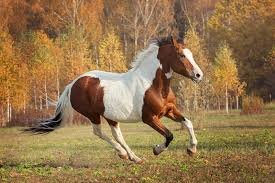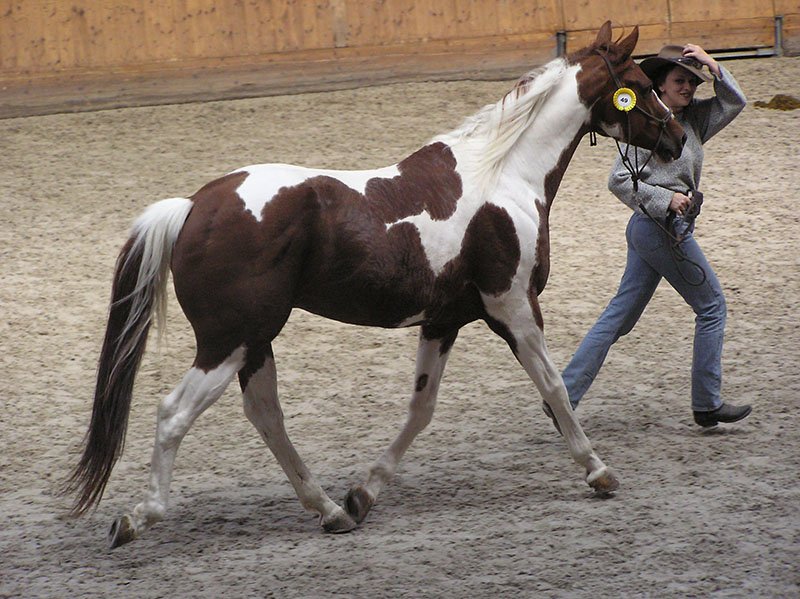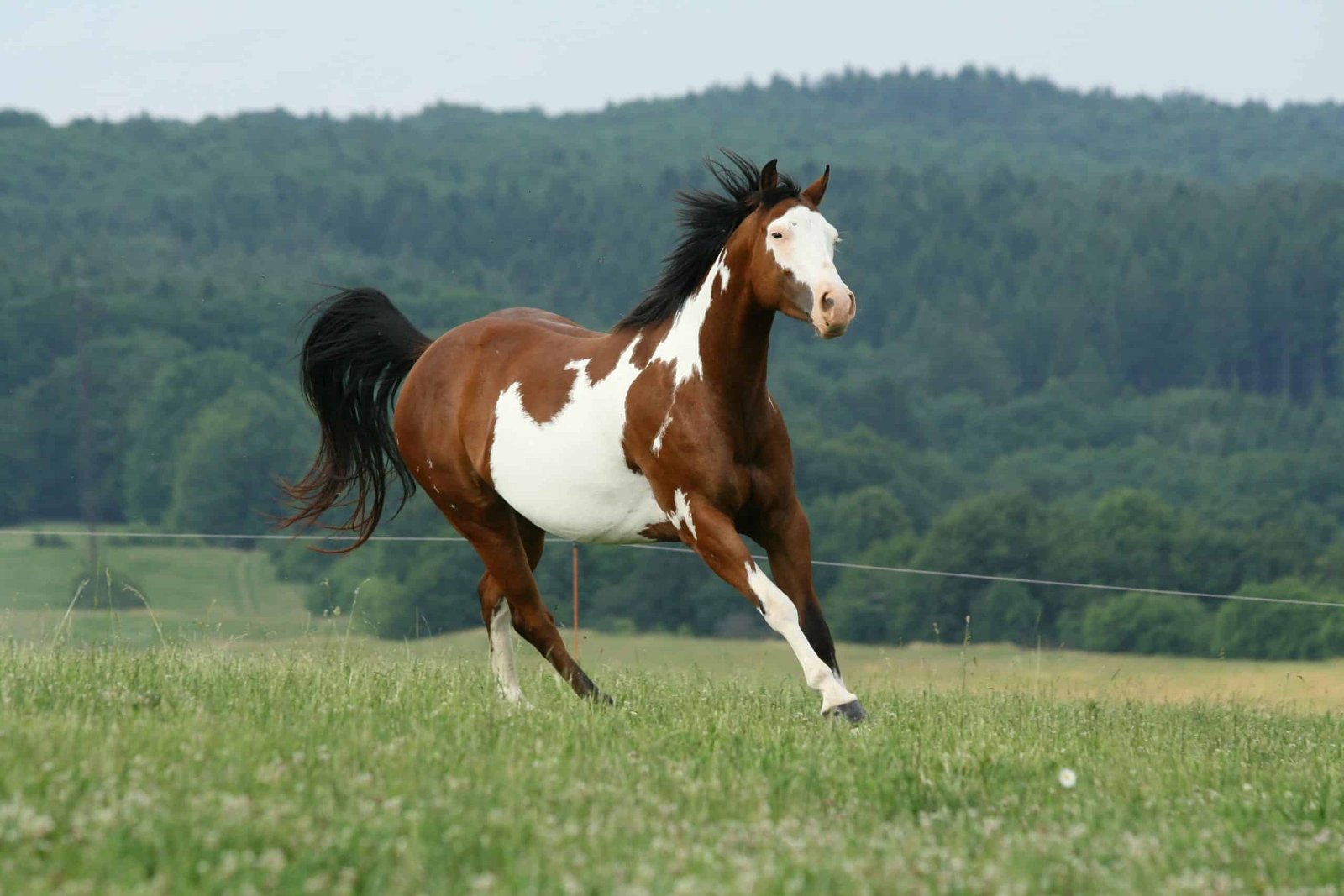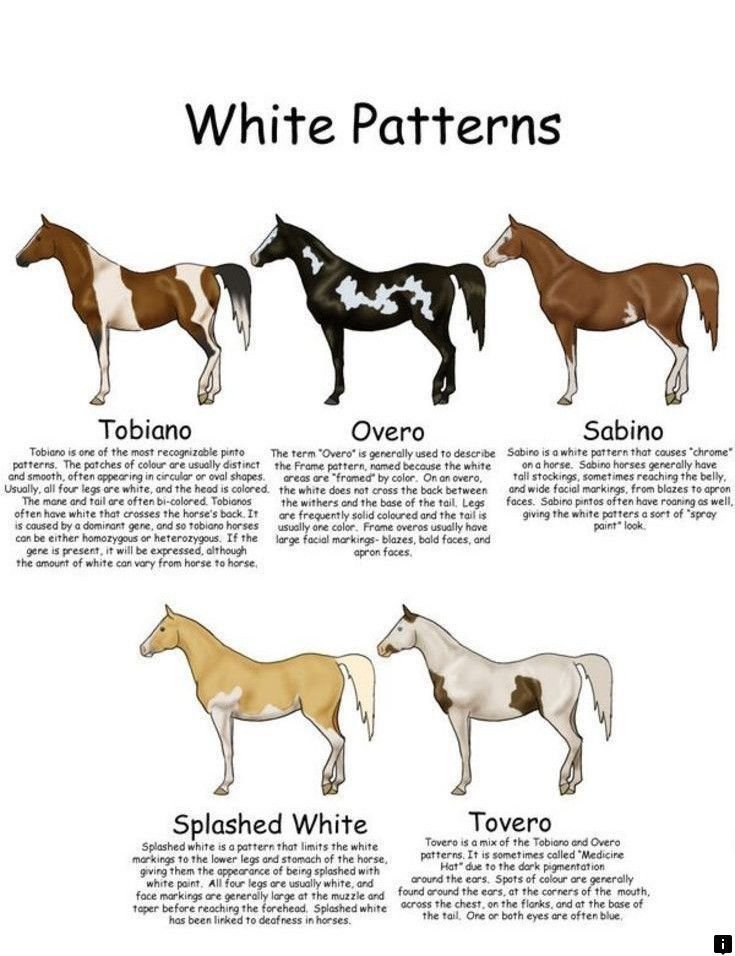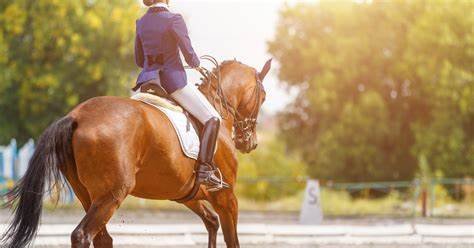Paint horses are known for their striking coat patterns, which make them one of the most visually stunning and distinctive horse breeds. Their unique markings, which can vary from horse to horse, combine the beauty of solid-colored horses with the eye-catching patterns of pinto horses. In this post, we will explore the different coat patterns of Paint horses, how they come about, and what makes these horses so special.
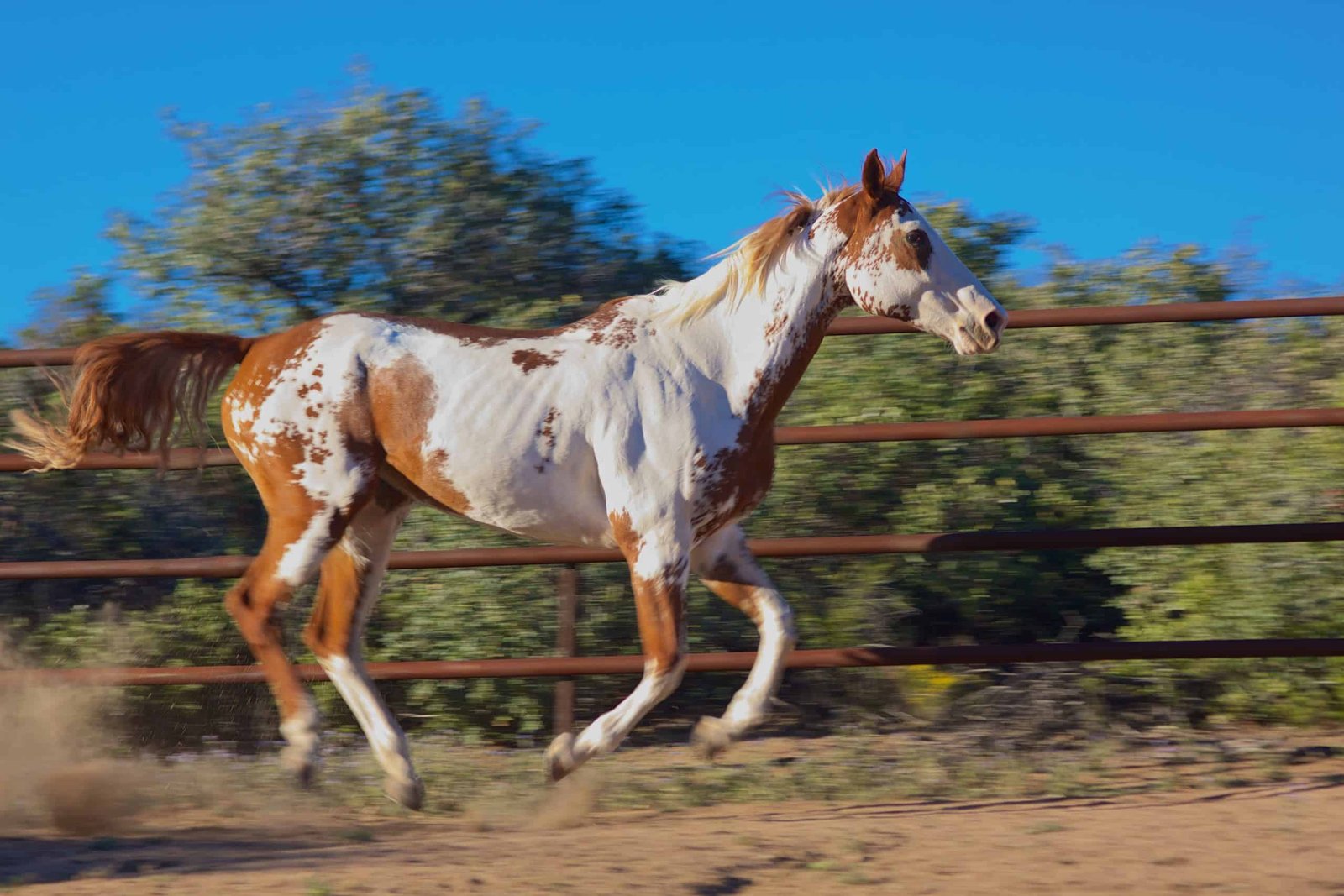
Understanding the Coat Patterns of Paint Horses
Paint horses are recognized for their distinctive coat patterns, which consist of large, irregular patches of white and dark colors. These patterns occur because of the breed’s genetic traits, which are influenced by two primary genes: the Tobiano gene and the Overo gene.
- Tobiano Pattern
The Tobiano pattern is one of the most common in Paint horses. It features white markings that typically cross the horse’s back, often covering the belly and legs. The patches are usually large, and the edges are generally rounded. The dark color can appear in any combination, including black, bay, or chestnut. Tobiano horses usually have white markings on their legs and faces as well, which adds to their striking appearance. The coat pattern tends to be symmetrical, giving the horse an orderly, neat look. - Overo Pattern
The Overo pattern is another common type seen in Paint horses. Unlike the Tobiano, the white patches on an Overo horse do not typically cross the back. Instead, they are irregular and often cover one side of the body, with jagged, scattered markings. Overo horses often have dark legs and may have a bald face or white spots around the eyes. These horses tend to have more asymmetrical and unpredictable markings, which makes each Overo horse look unique. - Tovero Pattern
The Tovero pattern is a blend of the Tobiano and Overo patterns. Horses with this coat pattern may have characteristics of both: the white patches crossing the back like a Tobiano, combined with the irregular, jagged markings of the Overo. This rare and distinctive pattern gives the horse an even more unique appearance, often with white markings on the face and legs.
The Genetics Behind Paint Horse Coat Patterns
The coat patterns of Paint horses are a result of specific genetic combinations. The genes responsible for these coat patterns are linked to color patterns in horses and are inherited from both parents. When both parents carry the same color genes, their offspring are more likely to inherit similar coat patterns.
The Tobiano and Overo genes are both dominant, but the exact pattern a foal will inherit depends on the genes from both parents. For instance, a horse that inherits one Tobiano gene and one Overo gene may produce a Tovero pattern. However, the gene combinations are not always predictable, and sometimes, foals can inherit no pattern at all.
The genetics behind Paint horses’ coat patterns make the breed especially fascinating for breeders and enthusiasts alike. Understanding these genetic influences helps breeders produce specific coat types, though there will always be some level of surprise with each new foal.
How Coat Patterns Affect the Paint Horse’s Appeal
The unique coat patterns of Paint horses contribute significantly to their popularity. Their striking appearances make them stand out in various disciplines, including rodeo events, western riding, and even dressage. The horses’ eye-catching markings often attract attention, whether in competitions or casual riding.
Many riders and owners also find these horses’ coat patterns to be a reflection of their individual personality and style. For some, the specific pattern on a Paint horse can feel almost like a personal signature. This deep connection to a horse’s unique appearance is part of what makes Paint horses so cherished by their owners and riders.
Additionally, Paint horses often display a combination of impressive athleticism and temperament, making them not only beautiful but also highly functional. Their versatility in various equestrian disciplines, combined with their standout appearance, makes them ideal for anyone seeking both performance and style.
The Role of Coat Patterns in Paint Horse Competitions
In Paint horse competitions, the breed’s distinctive coat patterns can sometimes play a role in judging, though athletic ability and conformation are the primary criteria. However, the unique coat patterns often serve as an eye-catching factor, helping Paint horses make a memorable impression in the show ring.
Some events, such as those held by the American Paint Horse Association (APHA), recognize and celebrate the breed’s varied coat patterns. Special classes or awards may even highlight the uniqueness of a horse’s appearance. For example, some competitions have prizes for the most unusual coat pattern or the most striking color contrast, showcasing the diversity within the breed.
Conclusion: The Beauty of Paint Horses’ Coat Patterns
The coat patterns of Paint horses are a true testament to the breed’s uniqueness. Whether it’s the symmetry of the Tobiano pattern, the irregular beauty of the Overo, or the combination found in Tovero horses, each Paint horse carries a pattern that sets it apart. These horses’ striking appearances not only make them popular in competitions but also deeply beloved by horse enthusiasts around the world. The mystery behind their coat patterns, along with their genetics, adds to the charm of Paint horses, making them stand out as one of the most beautiful and distinct breeds in the equestrian world.







